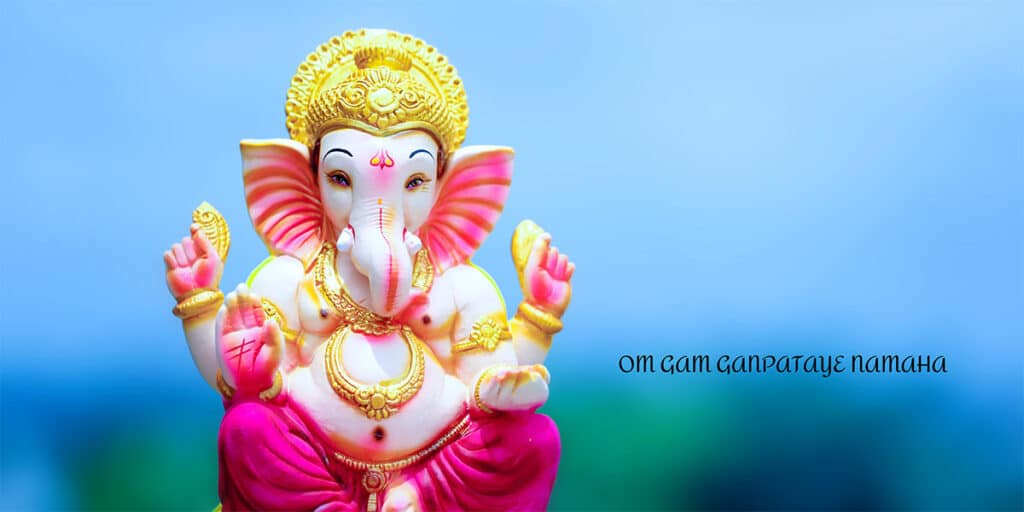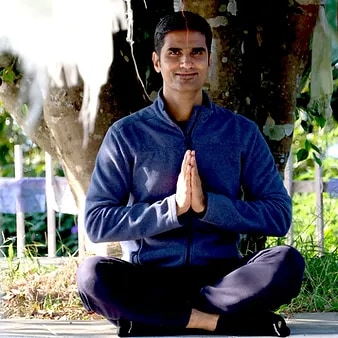The Significance of Lord Ganesha in Indian Tradition
by Hardik Mehta

A Path to Self-Knowledge through Yoga Sadhana
Lord Ganesha, the elephant-headed deity who is revered across India and beyond, occupies a unique and vital place in Hindu tradition. Known as the remover of obstacles, the god of beginnings, and the patron of arts and sciences, Ganesha’s influence permeates almost every aspect of Hindu life. Ganesha is a figure deeply embedded in the spiritual and cultural life of the Indian subcontinent. However, beyond the commonly understood symbolism, Lord Ganesha also embodies profound spiritual principles that resonate deeply with the practice of yoga sadhana—a disciplined spiritual practice aimed at self-realization.
The Auspicious Beginning: Invoking Lord Ganesha
In Hindu tradition, no new venture is undertaken without first invoking the blessings of Lord Ganesha. As “Vighnaharta,” the remover of obstacles and “Siddhivinayaka,” the bestower of success, Ganesha ensures that our path is clear of hindrances, whether they are external or internal. This makes Ganesha the ideal deity to seek blessings from when embarking on any new endeavour, be it material or spiritual. This is particularly relevant in the context of yoga, where practitioners often face numerous challenges—both physical and mental—on their journey toward self-realization.
When we set an intention to connect with our inner selves through yoga sadhana, we are essentially starting a new journey Every time we step onto the mat, we are embarking on a journey of transformation, whether it’s in the form of asanas (postures), pranayama (breathing techniques), or meditation. By invoking Ganesha at the start of a yoga practice, we align ourselves with his energy, inviting his guidance to help us overcome the obstacles that inevitably arise in our pursuit of spiritual growth.
Ganesha’s Symbolism in Yogic Practices
Ganesha’s iconography is filled with symbolic elements that align closely with the principles of yoga. Each aspect of his form conveys a message that can be applied to deepen one’s practice and understanding of yoga.
- The Elephant Head: Symbol of Wisdom and Knowledge
Ganesha’s elephant head is perhaps his most distinctive feature, symbolizing wisdom, intellect, and understanding. In yoga, knowledge is not just intellectual; it is experiential, gained through direct experience in practice. This experiential knowledge is referred to as “jnana” or self-knowledge, which is the ultimate goal of yoga sadhana.
As yogis, we are encouraged to develop a mind that is open and expansive, much like Ganesha’s large head, which can encompass vast amounts of knowledge. This openness allows us to receive insights from our practice and integrate them into our daily lives, fostering a deeper connection with our true selves.
- The Large Ears: Listening and Absorbing Knowledge
Ganesha’s large ears signify the importance of listening—listening to the teachings of the gurus, the wisdom of the scriptures, and the guidance of one’s inner self. In yoga, listening is a key aspect of the practice. Whether it’s listening to the rhythm of your breath, the sensations in your body, or the silent whispers of your inner consciousness, attentive listening deepens your practice and brings you closer to self-realization.
- The Trunk: Adaptability and Strength
Ganesha’s trunk is a symbol of adaptability and strength, capable of performing both delicate and powerful tasks. This duality is mirrored in yoga, where practitioners must balance strength with flexibility, both physically and mentally. The trunk’s ability to navigate obstacles with ease reflects the yogic principle of being adaptable in the face of challenges, whether they arise during a difficult asana or in life’s unpredictable circumstances.
The Role of Ganesha in Overcoming Inner Obstacles
In our quest for self-knowledge, we often encounter internal obstacles—fear, doubt, ego, and attachment. These obstacles, known as “kleshas” in yogic philosophy, include ignorance, ego, attachment, aversion, and fear. Lord Ganesha, as the remover of obstacles, symbolizes the inner strength and determination needed to transcend these barriers. By invoking Ganesha during yoga sadhana, practitioners seek his blessings to remove these internal blockages, allowing for a deeper connection with the self.
The Ultimate Goal: Self-Knowledge and Liberation
At the heart of yoga is the pursuit of self-knowledge, or “atma-jnana.” Self-knowledge begins with awareness—awareness of our thoughts, emotions, actions, and the underlying motivations that drive them. Ganesha’s keen perception and wisdom remind us of the importance of cultivating inner awareness. Through practices like meditation and mindfulness, yoga sadhana helps us develop this awareness, gradually revealing the true nature of the self. Through this process, we move closer to the ultimate goal of yoga—liberation, or “moksha.”
Ganesha and the Chakras: Energy Centres in the Body
In yogic tradition, the body is seen as a temple, with energy centres known as chakras playing a vital role in our physical, emotional, and spiritual well-being. The Muladhara Chakra is where our journey begins, and it is said that Ganesha resides here. This chakra represents our foundation, stability, and sense of security—qualities that are essential for any spiritual journey. By focusing on this chakra during yoga sadhana, practitioners can invoke Ganesha’s energy to ground themselves, ensuring a strong and stable foundation as they progress on the path to self-realization.
Ganesha’s Mantra: A Tool for Meditation and Focus
One of the most powerful ways to connect with Lord Ganesha in yoga sadhana is through the repetition of his mantra: “Om Gam Ganapataye Namaha.” This mantra is a powerful invocation that calls upon Ganesha’s energy to remove obstacles and bless the practitioner with wisdom and success.
Incorporating this mantra into a yoga practice, whether during meditation or as a chant at the beginning of a session, helps to focus the mind and align the practitioner with Ganesha’s protective and guiding energy. The rhythmic repetition of the mantra also aids in calming the mind, creating a meditative state that is conducive to deepening one’s practice and connection with the self.
Lord Ganesha as the Eternal Guide in Yoga Sadhana
Lord Ganesha’s significance in Indian tradition extends far beyond the rituals and festivities associated with him. He is a symbol of new beginnings, wisdom, and the inner strength required to overcome the obstacles on the path to self-realization. In the context of yoga sadhana, Ganesha becomes the guide who leads practitioners on their journey inward, helping them connect with their true selves and gain the self-knowledge that is the ultimate goal of yoga.
By invoking Lord Ganesha at the start of their practice, yogis align themselves with his divine energy, ensuring that their path is one of auspiciousness, success, and spiritual growth. Through this connection, the practice of yoga becomes not just a physical discipline, but a sacred journey toward self-discovery and enlightenment.
At Sayujya Yoga, we hold a deep reverence for Lord Ganesha, the remover of obstacles and the deity of new beginnings. His presence is integral to our practice, symbolizing the clearing of paths for personal and spiritual growth. By invoking Ganesha’s blessings, we ensure that our journey into yoga starts with a foundation of wisdom and protection. Join our 200 Hours Teacher Training Course (TTC) and embark on a transformative journey, where Ganesha’s guidance will illuminate your path towards becoming a confident and knowledgeable yoga teacher. Embrace new beginnings with us at Sayujya Yoga.
About the Author

Hardik Mehta
Hardik is an E-RYT 500 & YACEP (Yoga Alliance Continuing Education Provider), Yoga Alliance, USA. He has been practicing yoga for the last 9 years. Prior to finding his true calling in Yoga, he was working with various corporates for 12 years in the Retail and eCommerce sector.
